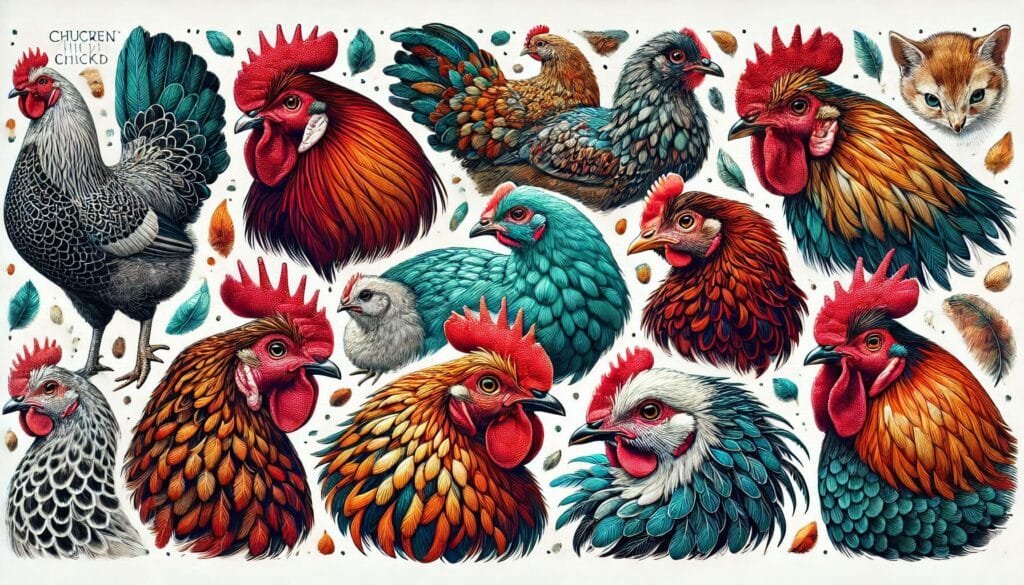Top Dual Purpose Chicken Breeds

Understanding Dual Purpose Chickens
Dual-purpose chickens serve two primary functions: they lay eggs and provide meat. This makes them ideal for home farming. Unlike specialized breeds that focus solely on egg production or meat yield, dual-purpose breeds strike a balance between the two.
Benefits of Raising Dual Purpose Chickens
- Sustainability: By raising dual-purpose chickens, you can become more self-sufficient. You won’t need to rely on store-bought meat or eggs.
- Lower Feed Costs: These chickens can forage effectively, reducing the amount of commercial feed needed.
- Heritage Breeds: Many dual-purpose chickens are heritage breeds, which means they have been bred over generations for specific traits.
- Versatility: They adapt well to various environments, making them suitable for both backyard flocks and larger farms.
Popular Dual Purpose Chicken Breeds
Several breeds stand out when it comes to dual-purpose capabilities. Here’s a closer look at some of the most popular options.
Barred Plymouth Rock
Overview
The Barred Plymouth Rock is one of the most recognizable dual-purpose breeds. Known for its striking black and white striped feathers, this breed is both hardy and productive.
Characteristics
- Egg Production: Approximately 200-280 brown eggs per year.
- Meat Quality: Grows to a weight of 7-9 pounds.
- Temperament: Friendly and good-natured, making them suitable for families.
For more information on Barred Plymouth Rocks, check out Omlet’s guide on dual-purpose chickens.
New Hampshire Red
Overview
New Hampshire Reds are valued for their robust egg-laying capabilities as well as their meat production.
Characteristics
- Egg Production: Produces around 200-300 brown eggs annually.
- Meat Quality: Typically weighs between 6.5-8.5 pounds.
- Temperament: Adaptable and easy to manage.
Learn more about New Hampshire Reds at Homesteaders of America.
Wyandotte
Overview
Wyandottes are known for their beautiful plumage and excellent dual-purpose qualities.
Characteristics
- Egg Production: Lays about 180-260 brown eggs per year.
- Meat Quality: Mature weight ranges from 6-9 pounds.
- Temperament: Calm and friendly, making them great pets.
For additional details on Wyandottes, visit Chicken Scratch NY.
Rhode Island Red
Overview
Rhode Island Reds are perhaps the most famous dual-purpose breed, known for their hardiness.
Characteristics
- Egg Production: Known to produce 200-300 brown eggs each year.
- Meat Quality: Weighs between 6.5-8.5 pounds when fully grown.
- Temperament: Hardy and resilient in various climates.
Explore more about Rhode Island Reds in this article from Ohioline.
Care Tips for Dual Purpose Chickens
Caring for dual-purpose chickens requires attention to their needs in terms of housing, feeding, and health management.
Housing Requirements
Space Needs
Provide ample space for your chickens to roam. Each bird should have at least 4 square feet inside the coop and 10 square feet in an outdoor run.
Coop Design
Ensure that your coop is well-ventilated yet protected from predators. Use sturdy materials to build a safe environment.
Feeding Guidelines
Balanced Diet
Feed your chickens a balanced diet that includes grains, protein sources, and greens. A high-quality layer feed is essential for egg production.
Foraging Opportunities
Encourage free-ranging when possible. This allows chickens to forage naturally, which can supplement their diet with insects and plants.
Health Management
Regular Check-Ups
Monitor your flock regularly for signs of illness or distress. Routine health checks can prevent outbreaks of disease.
Vaccinations
Consider vaccinating your chickens against common diseases such as Marek’s disease or Newcastle disease.
Conclusion
Raising dual-purpose chickens can be a rewarding experience. They provide both meat and eggs while requiring less maintenance than separate flocks. By choosing the right breed and providing proper care, you can enjoy the benefits of poultry farming year-round.
More from Genetics and Animal Breeding:
Quantitative and Qualitative Traits





Responses